Systems Engineering provides facilitation, guidance and leadership to integrate the relevant disciplines and specialty groups into a cohesive effort, forming an appropriately structured development process that proceeds from concept to production, operation, evolution and eventual disposal.
Systems Engineering considers both the business and the technical needs of customers with the goal of providing a quality solution that meets the needs of users and other stakeholders, is fit for the intended purpose in real-world operation, and avoids or minimizes adverse unintended consequences.

- Establishing, balancing and integrating stakeholders’ goals, purpose and success criteria, and defining actual or anticipated customer needs, operational concept and required functionality, starting early in the development cycle.
- Establishing an appropriate life cycle model, process approach and governance structures, considering the levels of complexity, uncertainty, change, and variety.
- Generating and evaluating alternative solution concepts and architectures.
- Base lining and modelling requirements and selected solution architecture for each phase of the endeavor.
- Performing design synthesis and system verification and validation.
- While considering both the problem and solution domains, taking into account necessary enabling systems and services, identifying the role that the parts and the relationships between the parts play with respect to the overall behavior and performance of the system, and determining how to balance all of these factors to achieve a satisfactory outcome.
Verification and Validation (V&V) is the process through which it is demonstrated that the system in its design phase and while rolling out has met all the requirements and it meets its intended purpose. V&V activities are carried out on an on-going basis until completion and are reported on at key stages of the project lifecycle. V&V activities support System Assurance and provide evidence for the cases for safety, as well as providing evidence to stakeholders to demonstrate their needs have been met. Validation is the process to confirm that the system built or to be built meets the stated needs of the stakeholders. It is to check whether the system will do whatever it is intended to do and at the same time will not do what it is not supposed to do. Intellex, from the client side or as an independent third party. helps to ensure that 'you built the right thing by validating the designs, prototypes, final system elements, training materials etc. Verification ensures conformation of a system to the requirements. We help our clients in the verification process to ensure that 'you built it right' by reviewing the system specification, design, processes and products in the system; and evaluate the progress of the evolving system. This helps to reduce risk by identifying the problems at early stages thereby verifying system capability completely, to meet all requirements prior to production and operation stages.
Requirement management involves the process of engaging with the client to understand the requirements of the proposed project in detail, clarifying the same and offering suggestions based on the experience we have gained from engaging in various projects across the globe to ensure that the outcome meets the requirements of all the stakeholders involved in a realistic manner making it economically and technically viable. This involves analyzing and eliciting the requirements, documenting them, ensuring trace-ability, prioritizing them, reaching an agreement with all the stakeholders and thereafter managing change efficiently. A requirement specification is produced as the outcome of this phase and helps in managing the different phases of the project without conflict of interest. A Requirement Trace-ability Matrix (RTM) is also produced to map each requirement client has specified in the requirement statement to the requirement specification. Conflicts of understanding between various stakeholders and vendors are ruled out in the beginning itself through multiple reviews and versions so that the following phases can be handled without hassle. This process is repeated further for the development of requirement specifications for various subsystems/products contributing to the realization of the system level requirement.
System integration is the process of progressively integrating subsystems and components as per the design to realize the intended system. This is a very important phase and requires a clear system integration strategy and close collaboration of all the vendors and stakeholders involved. At Intellex, we actively collaborate with clients, vendors and other stakeholders to roll out a system integration plan considering all boundaries between system elements including physical, logical and human interface. We test whether it meets all the functional and design requirements and whether the constraints are satisfied effectively.
Human Factors Engineering and Ergonomics (HF & E) deal with designing systems, products and processes taking into consideration the human interaction between them and the users. A Human Factor specialist is responsible for the “people part” in the design of complex systems. Human Factors assessments ensure that the designs of complex systems are optimized for their users and minimize the potential for human error. Intellex has access to specialists who provide integrated human factors design input from concept through to detailed design, to ensure that user requirements are understood and considered throughout the design. The HF specialists deal with the integration of human factors into the design of systems in such a way that they match the abilities and limitations of humans. We help to assess the fit between the people and the systems by providing human factors inputs to engineers and designers at each stage of development to ensure that systems are designed ergonomically.
Our HF specialists can support
- Control room design and layout
- Human Computer Interaction (HCI) design and development
- Workload, Usability and Human Error assessments
- Task design and evaluation
Electromagnetic compatibility (EMC) analysis is performed to ensure that electrical and electronic items present in a system comply with the norms specified by various governmental, commercial and international policies with respect to the radio frequencies emitted. It is also done to ensure that these items can perform in their intended electromagnetic environment. Our teams carry out EMC analysis to ensure compatibility, conformance as well as non interference with other signals there by providing assurance of maximum performance and user safety
Functional requirements are easy to state and realize as they make the system do what it is expected to do. How efficiently a system performs decides the viability, sustainability and profitability of a system. Performance modeling involves the development and optimization of systems through various mathematical and OR modeling techniques.
Our team of experts conduct performance modeling and tuning by simulating various process and system loads, against different system configurations to optimize system performance.







